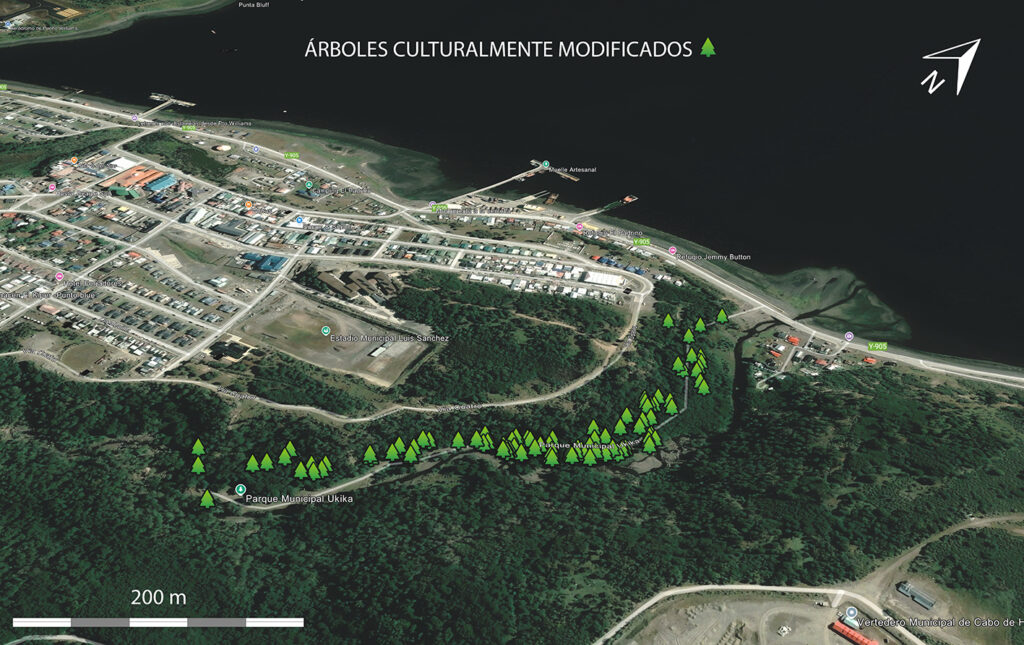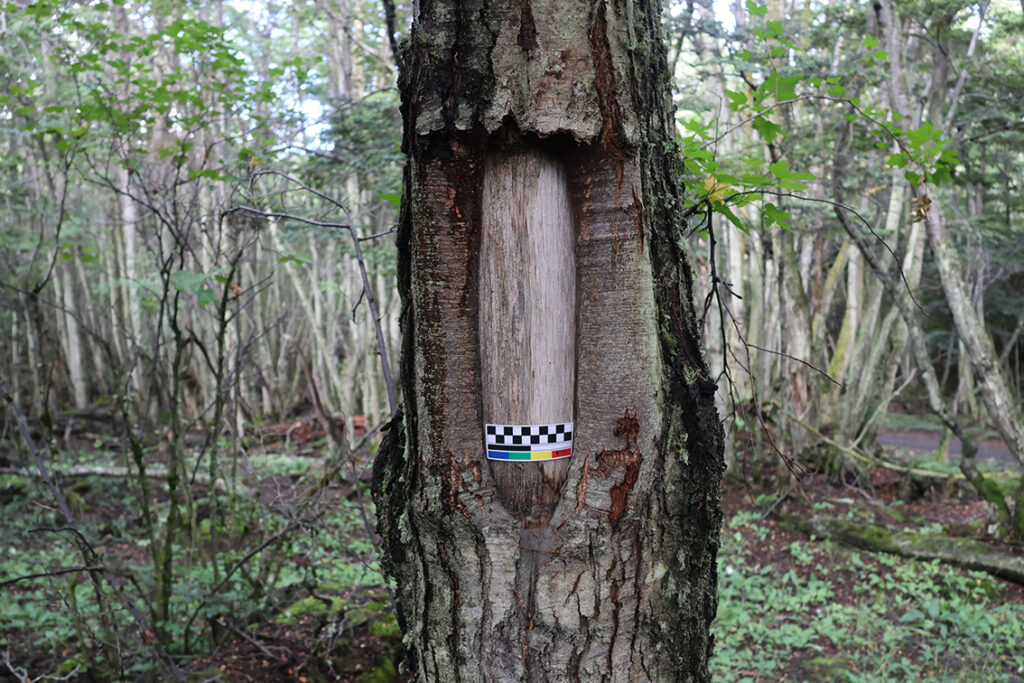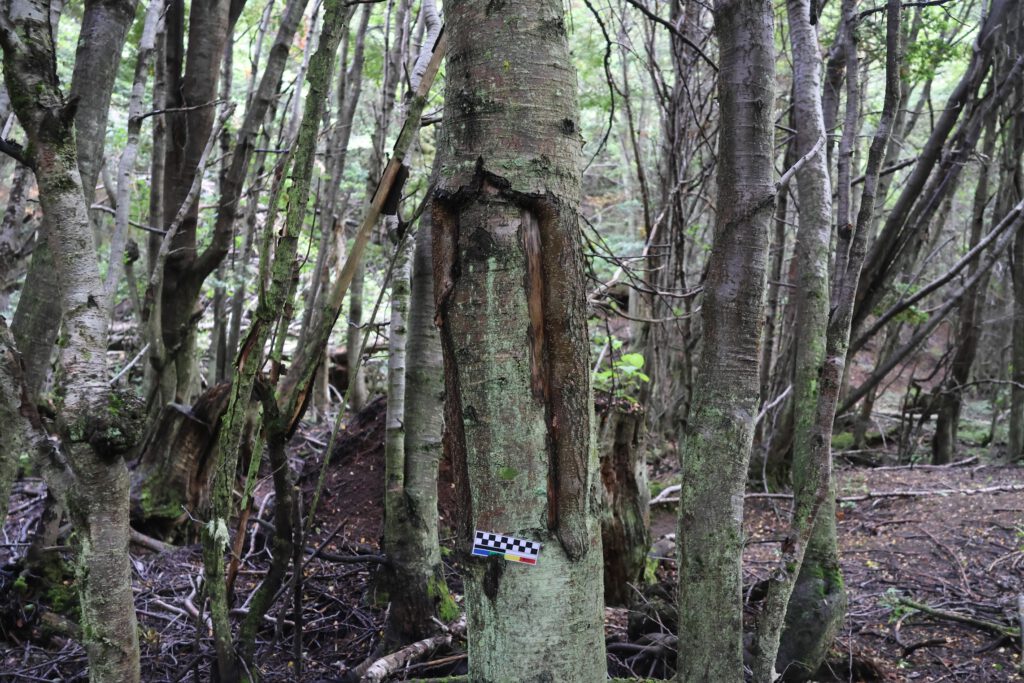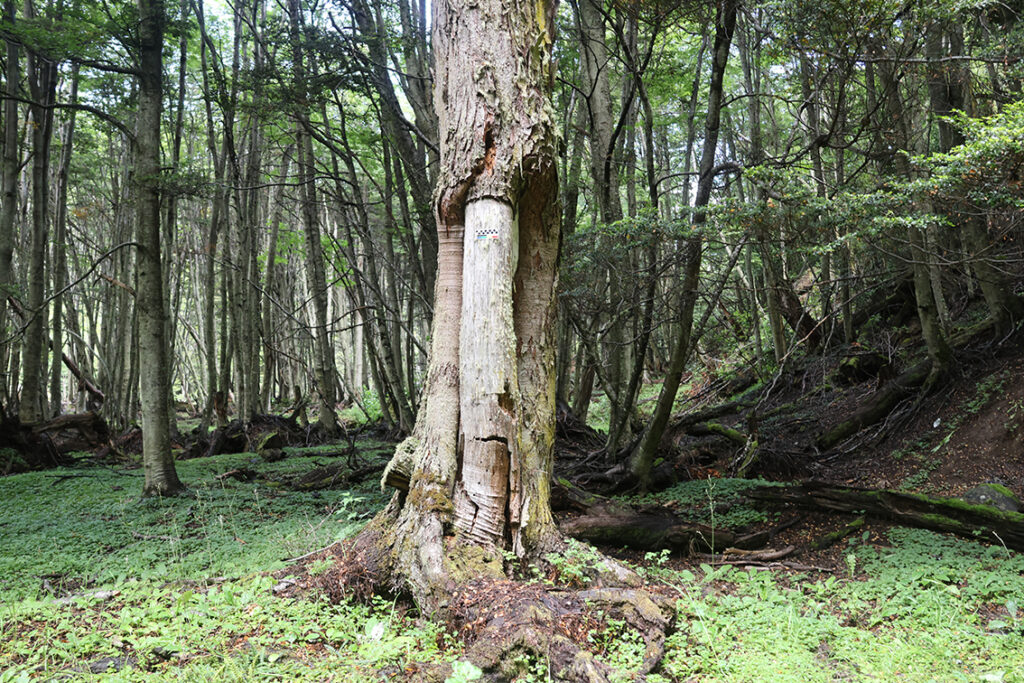Villa Ukika and the Culturally Modified Trees
Since 1967, Villa Ukika —founded as part of state relocation policies— has been the main Yagán settlement on Navarino Island, in the heart of the Fuegian archipelago. In its surroundings, the Ukika Municipal Park stands out as a true living archive of ancestral knowledge and history, thanks to the presence of at least 103 documented Culturally Modified Trees (CMTs) to date.

What are CMTs and why are they so important?
Culturally Modified Trees (CMTs) are living trees that have been altered by human communities for utilitarian, symbolic, or ritual purposes. In the case of the Yagán people and other southern canoeing groups, many of these modifications are associated with bark harvesting, especially from species such as coihue (Nothofagus). Far from being mere scars, these trees stand as living witnesses to traditional productive practices, some of which likely predate the founding of the modern village.
Bark Peelings: marks that tell the story of land use
Bark peelings are one of the most recognizable forms of CMTs. These marks have been recorded throughout various channels of southern Patagonia, such as along the Batchelor River, where they have also been found alongside shell middens that indicate human occupation. Typically, these marks are found in mixed coastal forests below 100 meters above sea level, in sheltered bays—large or small—protected from the wind, where trees grow straighter, making it easier to harvest bark without damaging the trunk, a knowledge passed down through generations.



Many of these cultural marks are rectangular or conical, and some show evidence of the use of sharp tools, suggesting a sophisticated and selective management of forest resources. This supports the possibility that CMTs span various time periods—some likely over 100 years old—making the landscape a territorial palimpsest of Indigenous culture.
A landscape that could be seen as an open-air museum
What makes these trees unique is not only their number or the types of marks they preserve, but the intertwining of nature, culture, and history that they embody. Each CMT is like a page in a book that continues to be written—a book that could be understood as a dynamic open-air museum in constant dialogue with its surroundings. For this reason, it is essential to move toward more thorough documentation, driven by active participation, integrating oral traditions, traditional techniques, and collaborative methodologies.
